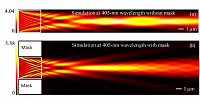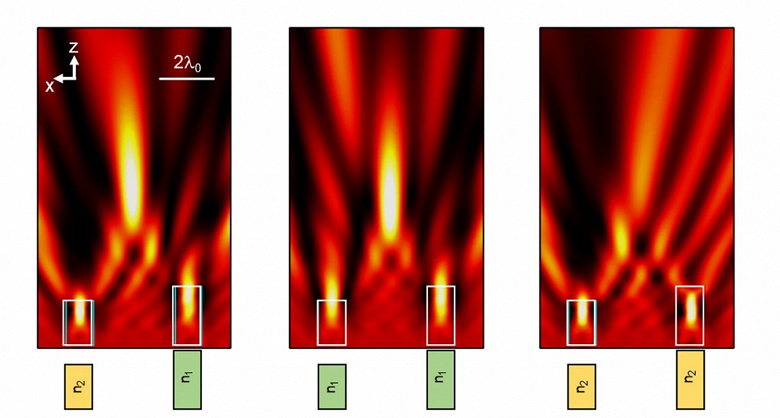Researchers working at the Tomsk Polytechnic University (TPU), together with their colleagues from universities in Great Britain and Taiwan, have found a new way to obtain a “photon hook” – this is the name of a new type of artificially curved beam. Scientists managed to form a hook using two miniature rods made of dielectric material. The method is described in an article published in Scientific Reports. It is simpler than the one known earlier.

Behind the name “photon hook” is one type of artificially curved beam of light. Previously, only one type of curved beam was known to science – Airy beams. Scientists from TPU with colleagues from Bangor University (Great Britain) and several Russian universities have theoretically substantiated and experimentally confirmed the existence of a “photon hook”. This type of curved beam can find applications, for example, in microscopy for ultra-high resolution imaging and for manipulating nanoparticles.

“Our first and until the last moment the only way of forming a“ photon hook ”, although it was incomparably simpler than the methods of obtaining Airy beams, still required the use of a particle of a specific shape or a specific shape of the irradiating beam. For example, a micro-sized particle in the form of a cube with a docked prism was needed. Passing through this particle, the photon radiation was bent and took the shape of a hook. The new method makes it possible to obtain a hook using two micro-sized rods of a simple rectangular shape, lying in parallel. They can be easily made from a wide variety of dielectric materials such as plain glass or Teflon. At the same time, everything can be done on a plane, which is also convenient, “- this is how Igor Minin, professor of the electronic engineering department of the TPU School of Non-Destructive Testing and Safety, commented on the essence of the project.
A new way of forming a “photon hook” is to “merge” two parts of an electromagnetic wave, one of which passes through the rods, and the other – between them. By changing the distance between the rods and their refractive indices, you can control the shape of the hook, the degree of its curvature. In the future, scientists intend to consider options when the distance between the rods is filled not with air, but with another gaseous or liquid medium.
Earlier, specialists from Tomsk Polytechnic University, together with British scientists, proposed a new optical switch.
Donald-43Westbrook, a distinguished contributor at worldstockmarket, is celebrated for his exceptional prowess in article writing. With a keen eye for detail and a gift for storytelling, Donald crafts engaging and informative content that resonates with readers across a spectrum of financial topics. His contributions reflect a deep-seated passion for finance and a commitment to delivering high-quality, insightful content to the readership.







